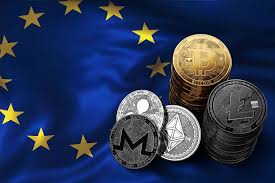On Wednesday, the Federal Reserve slashed its benchmark interest rate by an exceptionally significant half-point.
This was a drastic departure from the more than two years of high rates, which both helped control inflation and made borrowing extremely costly for American consumers.
The Fed’s first rate reduction in over four years is a reflection of its newfound emphasis on supporting the labor market, which is slowing down.
The Fed’s move, which comes only weeks before the presidential election, also has the potential to destabilize the economy as Americans get ready to cast their ballots.
In an attempt to stop the worst inflation run in four decades, the central bank cut its benchmark rate, which had been at a two-decade high of 5.3% for 14 months.
As a result, the rate is currently approximately 4.8%. From a peak of 9.1% in mid-2022 to a three-year low of 2.5% in August—just beyond the Fed’s 2% target—inflation has sharply declined.
The officials at the Federal Reserve also hinted that they want to lower their benchmark interest rate by an extra half-point during their final two meetings of the year in November and December.
Additionally, they plan to reduce rates by two in 2026 and four more in 2025.
The Fed approached declaring victory over inflation more closely than it has ever done, both in a statement and during a press conference with Chair Jerome Powell.
Powell stated, “Given the progress on inflation, we know it is time to recalibrate our (interest rate) policy to something more appropriate.”
We’re not declaring the “mission accomplished,” but I must admit that the advancements we’ve achieved give us hope.
He went on, “Our decision today is designed to keep the U.S. economy in a good place.”
Even while the central bank now considers inflation to be mostly under control, many Americans are nevertheless dissatisfied with the high cost of necessities like groceries, gas, and rent.
Donald Trump, the former president, accuses the Biden-Harris administration of causing a spike in inflation.
Laptops 1000Conversely, Vice President Kamala Harris has accused President Trump of further driving up consumer costs with his threat to impose taxes on all imports.
The Fed’s rate reductions could eventually result in cheaper borrowing costs for credit cards, vehicle loans, and mortgages, improving Americans’ financial situation and encouraging increased growth and spending.
In addition to transferring credit card debt to less expensive personal loans or home equity lines, homeowners will be able to refinance their mortgages at reduced interest rates, saving them money each month.
Additionally, businesses might borrow more money and invest more. Refinancing demand has surged as average mortgage rates have already fallen to an 18-month low of 6.2%, per Freddie Mac.
Laura Rosner-Warburton, senior economist at MacroPolicy Perspectives, described the Fed’s action on Wednesday as “a step in the right direction.”
She stated that making the additional rate reduction proposed, would “avoid risks from building and the unemployment rate from rising.” They are attempting to maintain a strong economy.
The policymakers have revised their estimates and now predict more unemployment along with a quicker decline in inflation than they expected three months ago.
By year’s end, their preferred inflation gauge is expected to drop from its current 2.5% to 2.1%, and by the end of 2025, it will have dropped to 2.3%.
They now anticipate that by the end of 2025, the unemployment rate will have increased from 4.2% to 4.4% this year. That exceeds their earlier projections, which were 4.2% for 2025 and 4% at the end of this year.
When Powell addressed the press at his press conference, many asked if the Fed was admitting that it waited too long to start lowering borrowing rates by deciding to cut its benchmark rate by an exceptionally big half-point.
“We don’t believe we’re behind,” he answered. We consider this to be relevant. However, I believe you may see this as evidence of our resolve to stay on top of things.
We’re not witnessing an increase in jobless claims, layoffs, or company announcements that such events are anticipated.
“There is a belief that the best time to support the labor market is when it’s robust, not when layoffs start to occur,” he continued.
We believe that additional easing of labor market conditions is not necessary to get inflation down to 2%.
The Federal Reserve will meet again on November 6-7, which is the day after the election.
The Fed is taking a chance by reducing rates this week, just before the election, as Trump has claimed that doing so would be political meddling.
However, Politico has revealed that during interviews, some influential Senate Republicans stated they were in favor of a rate cut this week.
Powell disputed the idea that the Fed shouldn’t lower interest rates so soon before a vote.
He declared, “We’re not serving any political figure, politician, cause, or issue.”
All Americans simply want price stability and maximum employment. Additionally, that is the configuration of the other central banks. I firmly believe that the current institutional system will endure, as it has proven beneficial for the general public.
An implicit refutation of Trump’s claims that an economic catastrophe is imminent was Powell’s assessment of the economy as essentially sound, with inflation under control and employment steady but projected to gain from rate decreases.
The Federal Reserve’s action by increasing its main rate eleven times in 2022 and 2023, Wednesday undoes the efforts it made to combat inflation.
Since then, wage growth has decreased, eliminating one possible source of pressure on inflation.
Inflation should continue to decline in the next months as seen by the declining gas and oil prices.
Additionally, customers are protesting excessive costs, putting pressure on retailers like Target and McDonald’s to offer promotions and discounts.
For the first time since 2005, a Fed governing board member disapproved of the agency’s decision.
Board member Michelle Bowman said she would have liked a quarter-point rate drop. Bowman has previously voiced concerns that inflation had not been completely beaten.
However, it seems that all of the Fed’s officials are aware that, following years of robust job expansion, firms have reduced hiring, and the unemployment rate has increased from its half-century low in April 2023 to a still-low 4.2%. Unemployment tends to continue rising after it reaches that point.
However, many economists and government officials have pointed out that rather than being the result of layoffs, the increase in unemployment this time is mostly due to a surge in job seekers, particularly recent college graduates and new immigrants.
According to High Frequency Economics head U.S. economist Rubeela Farooqi, “preserving the health of the labor market and preventing unnecessary damage to the economy from a pretty restrictive (interest rate) stance” is the Fed’s current focus.

















